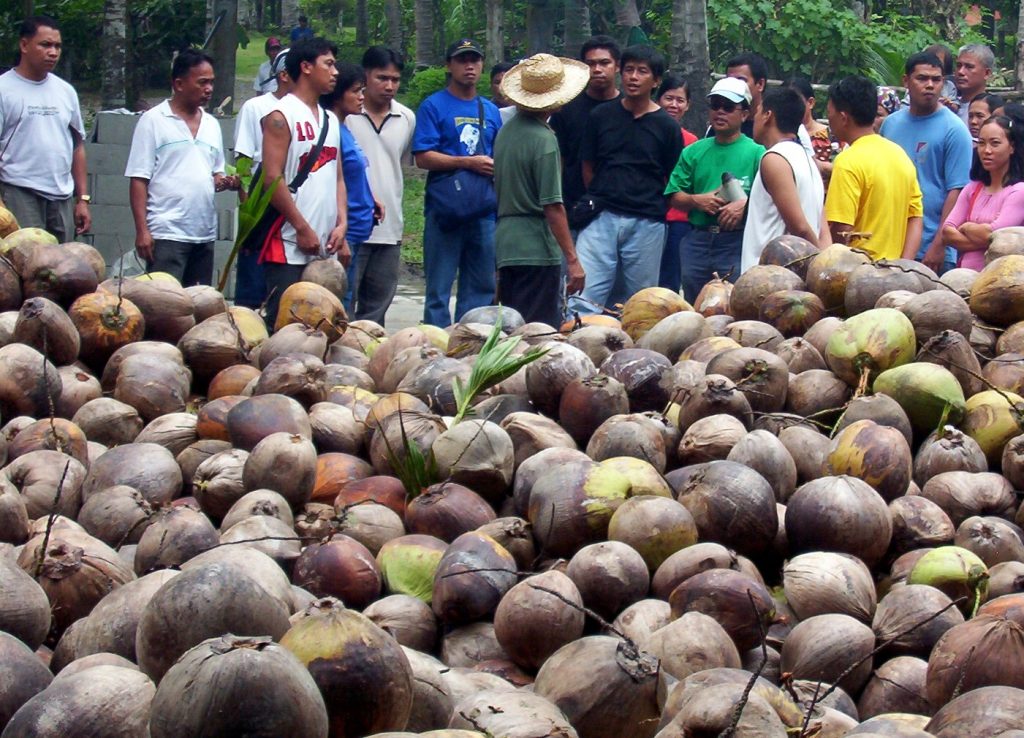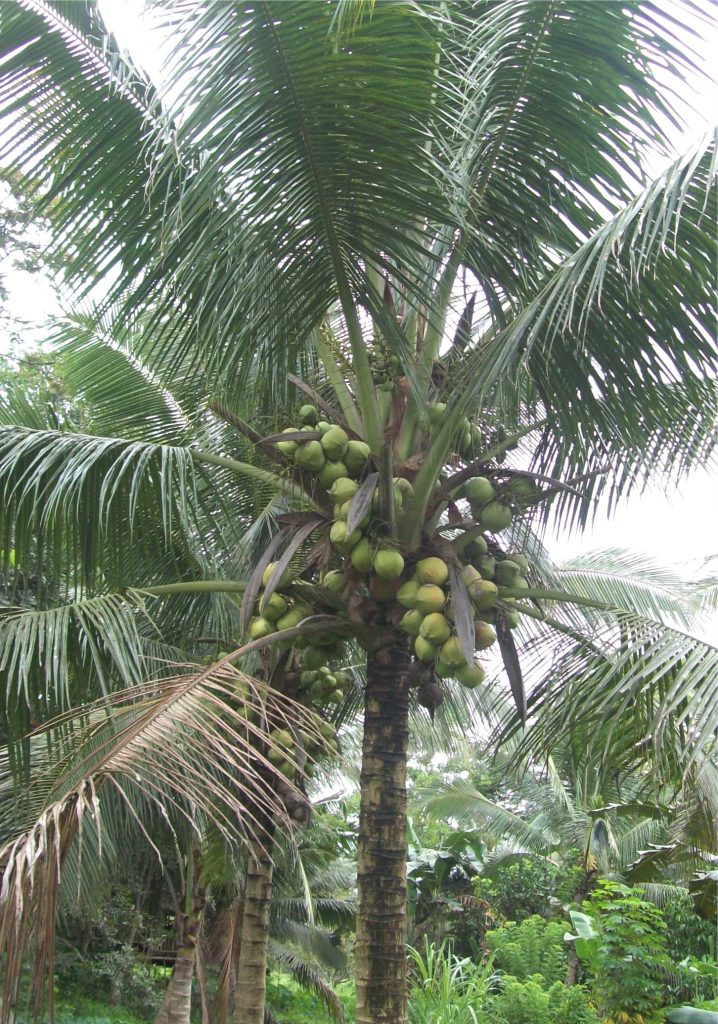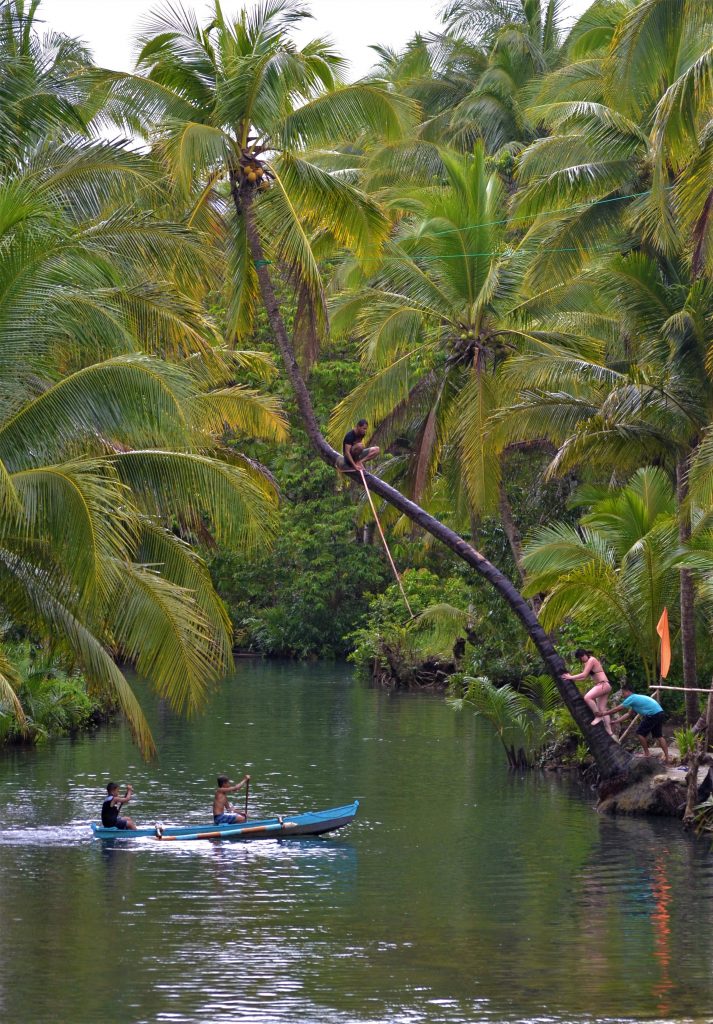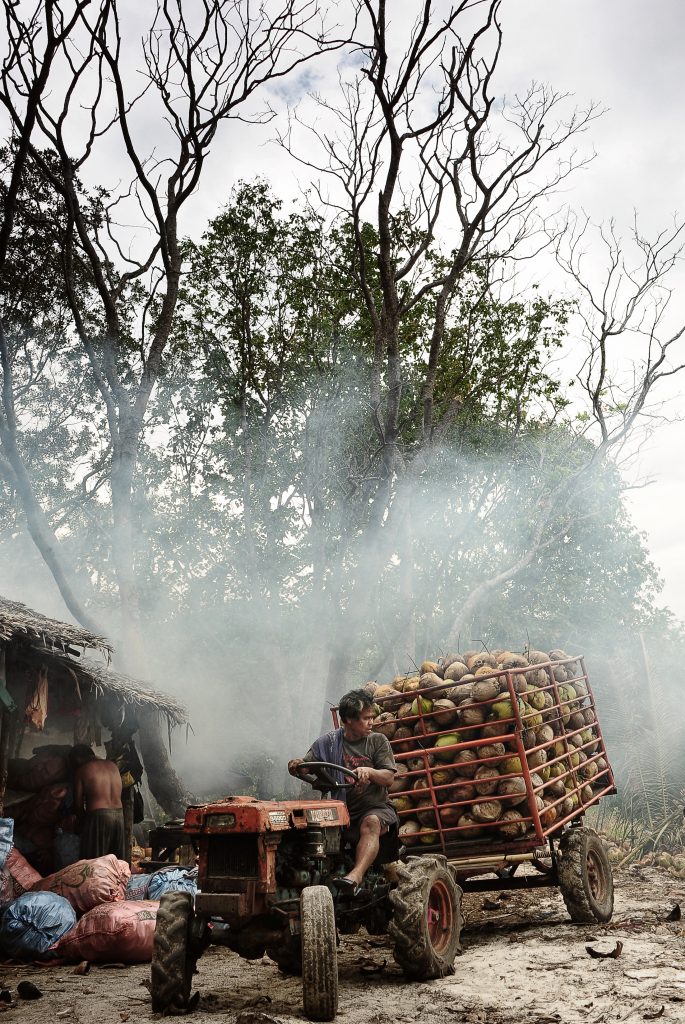“(Coconut) is the biggest agricultural export, yet there is way more we can do especially in higher value product exports.” – Dean Lao Jr., chairman of United Coconut Association of the Philippines
***
The coconut industry in a quandary. Price of copra in the world market goes down significantly and coconut farmers are thinking the government is not doing something to curb it. The downfall of copra price started two years ago and still going on.
“The coconut farmers are greatly resentment due to the collapse of the price of copra and they believe the Department of Agriculture kept them,” lamented Agriculture Secretary Emmanuel Piñol.
Their thinking is far from the truth, according to Piñol. His department, he said, can “do little” for the copra price since it is the world market that dictates it. In addition, it was only last year that the Philippine Coconut Authority was finally transferred under his department.
Most coconut farmers think only of copra – the dried meat or kernel of the coconut – when it comes to export. But there’s another product from coconut that farmers can take advantage of. It’s called activated carbon (AC), which is made from coconut shells.
But most Filipinos are not aware of it. AC is “unheard” even among coconut farmers and policy makers.

Actually, AC is also known as activated charcoal. When water and other volatile substances are removed from the carbonic compounds – which are abundant in plants and other living organisms – charcoal is the resulting product.
Charcoal, which is used mostly in cooking by Filipinos, is in the solid form and contains ash; as such, it doesn’t have carbon in its pure form. It becomes AC when charcoal is treated with oxygen. When charcoal is activated, the porosity is increased and with a large surface area, it can absorb substances effectively.
AC is popularly used as a water filter but in recent years it has been utilized as additive in such processed products like toothpaste and soap. Tablets or capsules of AC are used in many countries as an over-the-counter drug to treat diarrhea, indigestion and flatulence.
AC, often infused with sulfur or iodine, is also widely used to trap mercury emissions from coal-fired power stations and medical incinerators. In like manner, AC is used in methane and hydrogen storage, sewage treatment, ail filters in gas masks and respirators, and filters in compressed air.
The Philippines has been producing AC since the 1970s yet. And it has been exporting AC for over five decades now. Last year alone, about 76,992 metric tons (MT) has been exported with a value of $135.187 million.
Data from the Philippine Statistics Authority (PSA) showed the Philippines has been exporting AC to over 68 countries today, which is more than double the 25 markets it used to ship 28 years ago.
“We have not exploited the market for activated carbon, which is very huge,” said Senen M. Perlada, the director of the Export Marketing Bureau of the Department of Trade and Industry, during the first International Coconut Conference held in Davao City in 2016.

In an industry briefing some years back, Bonifacio Fernandez Jr. of the BF Industries and Philips Carbon in Mindanao reported the world demand of AC rose from 644,000 MT in 2001 to almost 1.2 million MT in 2011. By 2021, it is forecasted to surge to 2.7 million MT.
Although AC is black, the future of the traded commodity is bright. “World demand of activated carbon is expected to strengthen in 2018,” the International Coconut Community (ICC) reported two years ago. “The trend was following a positive growth in the last decade. Global imports of activated carbon in 2006 was 0.55 million MT and jumped to 0.85 million MT in 2016 which shows an increase by 54%.
“The average annual growth of world imports of activated carbon in the last decade was 4.9%,” ICC added. “In 2017, the growth of demand for the product was 10.8%. United States, Japan, Germany, South Korea and Belgium were the main importing countries of activated carbon in the global market. The five countries absorbed 40% of the product from the global market during 2017.”
In Asia, the major producing countries of coconut shell-based AC are India, Indonesia, the Philippines, and Sri Lanka. “Export volume of the commodity from the Philippines was 23,641 MT for the period of January-April 2018,” the ICC reported. “Germany, Sri Lanka and Japan were major importing countries for activated carbon from Philippines. Accumulated export volume to those countries was 46.1% of the total export.
“In 2017, the Philippines shipped 70,353 MT of activated carbon to international market which was 14.5% higher compared to the corresponding period of previous year, that is, 60,162 MT. Germany, Japan, and United States were the main destinations, which absorbed more than 49% of total export of activated carbon from the Philippines,” the ICC said.
Coconut shell activated carbons are very popular in potable water purification industries. “The use of activated carbon to remove harmful impurities like organic contaminants from water has been practiced since Roman times,” wrote Dr. P.A. Shankar in the website, watertechonline.com.
There are many materials that can be used as base materials for AC. The most common used in water purification are lignite, bituminous and anthracite coal and peat, wood and coconut shell.
Among these materials, coconut shell stands out. “Coconut shell-based activated carbons are the least dusty.” Dr. Shankar wrote. “Predominantly microporous, they are well-suited for organic chemical adsorption. Coconut shell-based activated carbon has the highest hardness compared to other types of activated carbons, which makes it the ideal carbon for water purification.”

The Taiwan-based Food and Fertilizer Technology Center (FFTC) has developed a technology on how to process coconut shells into AC. “Coconut production at farmer level is 1 ton per hectare, with coconut shell by-products of 0.9 ton, which in turn can yield 0.36 ton of activated charcoal,” it said.
The materials and equipment to be used for processing coconut shell into AC are the following: coconut shell, drum or burning sink, oven, plastic pail, crushes wood/iron, draining tray, distilled water, and sieve (100 mesh).
This is the procedure: Separate and clean coconut shell from other materials, such as coconut fiber or soil. Sun dry. Burn dried coconut shell at burning sink or drum at 300-500 degrees Centigrade for 3-5 hours. Soak charcoal in chemical solution for 12-18 hours to become activated charcoal.
Wash charcoal with distilled/clean water. Spread on tray at room temperature (110 degrees Centigrade) for 3 hours. Crush or refine activated charcoal with crusher wood/iron into size of 100 mesh. Pack activated charcoal in plastic.
One good thing about coconut shells as base materials for AC is that they are renewable sources. “Coconut plantations with millions of hectares continue to provide all the benefits of green trees to our environment in spite of using billions of coconut shells per year for activation,” Dr. Shankar stressed.

The coconut industry is a dominant sector of Philippine agriculture. Data gathered by the author showed that of the 12 million hectares of farmlands, 3.6 million hectares are devoted to coconut. In fact, 68 out of 81 provinces are coconut areas.
The Philippines is the world’s second largest producer of coconut products, after Indonesia. It is home to over 338 million bearing and non-bearing coconut trees, the PSA states. About 48% (1,595,120 hectares) of all coconut is planted in Mindanao but it produces 56% (8.1 million tons) of the total production. Davao region is the top producer (2.5 million tons) followed by Zamboanga Peninsula (1.2 million tons).






